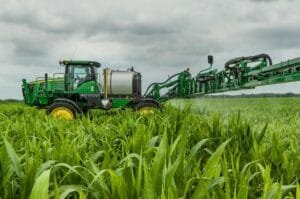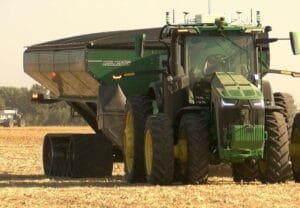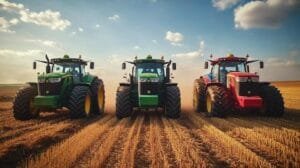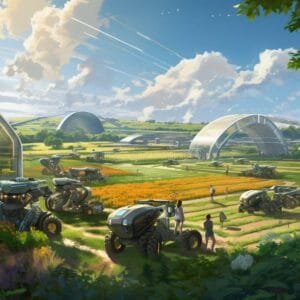In the swirling tapestry of agricultural evolution, autonomous technology hasn’t so much tiptoed as it has barreled directly into the heart of orchard management. This digital renaissance moves at a pace quite unlike what was forecast even five years ago. Fields that once echoed with human voices now feature methodical buzzes and beeping sentinels traversing dirt paths beneath an overstory of branches.
Unexpected Leaps in Orchard Innovation
Lately, industry leaders have unveiled machines that form shapes both familiar and foreign within these sylvan landscapes. John Deere’s Five-Meter Light Autonomous Orchard Tractor, recently demoed for growers, features Lidar sensors usually reserved for other industries. These sensors help robotic engines glide through tightly spaced rows with nonchalance and rare precision. A seasoned observer might recall how swathes of chemical spray once drifted indiscriminately—now it lands mostly where needed.
Not all progress walks lockstep with expectation. The incoming battery-electric tractor variants are anticipated to maintain diesel-equivalent horsepower while introducing subtler operational timbres (if perhaps sacrificing some traditional engine warmth). Initially, there was some skepticism about energy density and recharge logistics; on reviewing newer engineering documentation though, manufacturers appear poised to address concerns around range limitations.
Orchard Robotics: From Hype Toward Tangible Impact
A crucial aspect is labor cost dynamics. With labor market volatility becoming more pronounced each season—swinging from abundance to drought seemingly overnight—robots have emerged as steadfast assistants rather than futuristic novelties. One California almond grower credits his autonomous tractor with slashing labor costs by about thirty percent after only two harvests, attributing part of that success to these machines’ ability to navigate rugged micro-terrain scattered between aging rootstocks found in mature orchards.
Additionally, artificial intelligence modules embedded within many contemporary orchard tractors allow dynamic adaptation when encountering unexpected obstacles (a dropped irrigation riser or a wandering barn cat). “It’s like having a tireless worker who never misplaces their wrench nor stops for lunch,” one grower quipped during an open house demonstration.
Chemical Application Precision: From Paintbrushes To Pinpoints
It’s not merely manpower efficiency at stake here; stewardship enters the dialogue as well. Smart sprayers paired with environmental sensors can reduce pesticide usage by up to ninety percent compared with legacy methods—a swift decline unthinkable before algorithmic targeting disrupted blanket applications. Where previous generations might refer wistfully back toward intuitive touch in managing tree health, now machine learning factors in hundreds—or sometimes thousands—of variables before deploying resources.
Water use also undergoes scrutiny beneath this shifting paradigm. Precision irrigation systems analyze plant transpiration indices using real-time satellite feed correction coupled unexpectedly with simple barometric gauges set along windbreaks; this combination has led certain groves in arid valleys northwards from Salinas Valley to observe water consumption improvements—even above thirty percent gains in efficiency could be possible under testbed conditions.
Of course, farmers do not universally discard time-tested practices just because silicon chips beckon them forward—a notion reminiscent of Mark Twain’s riverboat pilots refusing steamer automation initially yet eventually becoming steamboat tinkerers themselves.
Cognitive Navigation—and Errors In Perception
Drones fly overhead nowadays not merely as hobbycraft but as diagnostic tools deciphering chlorosis patterns invisible until dough stage or identifying stress signatures before leaves betray even a whisper of wilt. The coupling between drone-captured imagery and subsoil moisture meters isn’t seamless per se—sometimes readings contradict visual cues yet somehow still contribute positively toward seasonal output incrementally rather than exponentially (an interesting statistical plateau).
Minor grammatical twists occasionally surface among documentation describing autonomy kits—for instance: “With settings programmed late on Tuesday night by Russel already asleep beside spreadsheets left unfinished.” Whether accidental or deliberately poetic is anybody’s guess—it echoes conversation overheard after dusk among co-op managers awaiting frost risk advisories that rarely correspond perfectly year-to-year anyway.
Oddly enough, despite these advancements promising formidable reductions in food waste through targeted picking cycles guided by historical yield indexes recalibrated annually using regression models neither entirely explained nor dismissed during conferences—the actual crate counts have sometimes failed matching projected quotas due apparently more often than one would think…to overly optimistic bloom counts earlier each spring.
When Tradition Dances With Algorithmic Routine
For growers balancing generational wisdom against circuit-board optimism—the path forward features hybridization: blends wherein pruning techniques passed down orally meet machine-tuned torque regulators calculated daily via cloud analytics platforms whose server locations nobody present could confidently find on a pushpin map if pressed mid-harvest festival evening.
Rooted near tradition—but always bending slightly towards novelty like willow twigs after a storm—the journey continues onward perhaps never fully settling into either rut nor furrow too deeply worn.
To borrow an old phrase still heard amidst the scent of pear blossoms come April: It hasn’t so much been teaching old dogs new tricks here as dressing up ancestral hounds in glowing LED collars before letting them snuffle out new trails when Orion returns overhead each winter nightfall.







